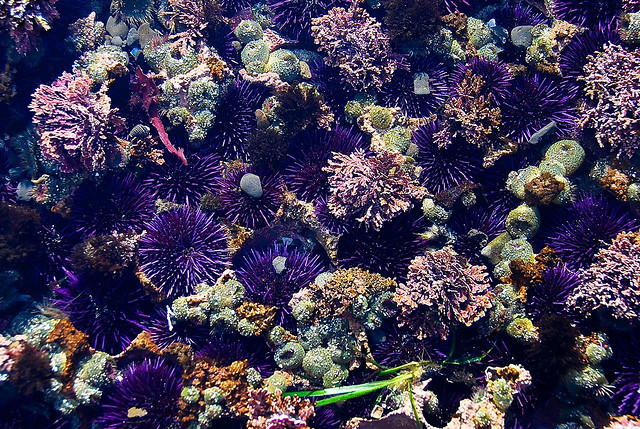New observations portend “a greater resilience” of such organisms to the projected “highly variable pH/pCO2 environments of future ocean acidification”… Read More
Predicting Precipitation Extremes via CMIP5 Climate Models (7 Jan 2014)
After decades of climate model constructing and testing there are still gross inadequacies and misrepresentations in even the world’s best climate models that are so serious as to render their projections of future precipitation of less-than-adequate value… Read More
Corals Forced to Live in a CO2-Enriched and Warmer Environment (7 Jan 2014)
The authors of this study conclude that “some corals could be more resistant to combined ocean acidification and warming expected by the end of this century than previously thought,” such that “the immediate effects of rising seawater temperature and ocean acidification may be tolerable for some species”… Read More
Echinoid Egg Fertilization in Warmed and Acidified Seawater (7 Jan 2014)
The impact of increased temperature (2-4°C above ambient) and decreased pH (0.2-0.4 pH units below ambient) on fertilization in the Antarctic echinoid Sterechinus neumayeri was such that decreased pH did not affect fertilization but warming enhanced it… Read More
Near-Death Experiences of Brazilian Corals (8 Jan 2014)
The corals of Caramuanas reef displayed certain resilience to the temperature perturbations caused by the 2010 ENSO event, suggesting an adaptive capacity or resistance to coral bleaching… Read More
The Flip Side of Coral Bleaching (8 Jan 2014)
Coral bleaching is not all gloom and doom, it can have benefits. So say the authors of this study who wrote that “bleaching is a prime regulator for the settlement of new recruitment of scleractinian corals which leads to diversified reef area,” while further noting that “the adaptive features of bleaching can be seen as a mechanism that enables the exchange of symbionts in a better fit of the holobiont to a changed environment”… Read More
Northeast Monsoon Rainfall Over South Peninsular India (8 Jan 2014)
How well is it predicted by state-of-the-art general circulation models? In the words of the scientists who conducted this study, “the models are not able to capture the inter-annual variability present in northeast monsoon rainfall.” And they say that this failure arises “because of deviations of these patterns from those of their observed counterparts, which suggests that the models tend to either overestimate or underestimate the observations”… Read More
Australian Cane Toads: Expanding Their Ranges in Response to Climate Changes (8 Jan 2014)
According to the authors of this report, studies on established animal populations “may massively underestimate dispersal rates at the leading edge of an expanding population,” which underestimation, in turn, leads to the under-prediction of the rates at which native taxa can expand into newly available habitat under climate change… Read More





